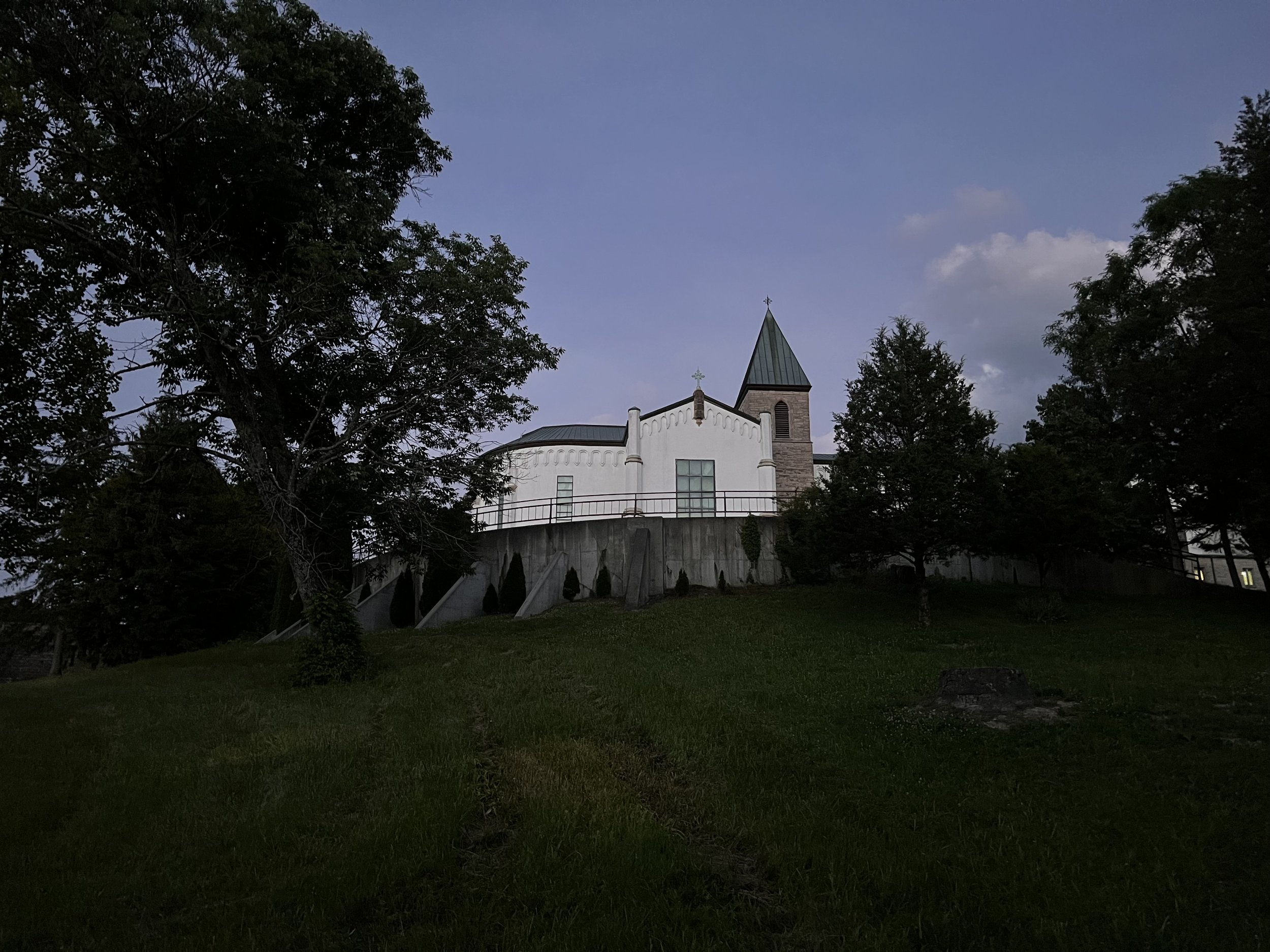A Reflection on Gethsemani Monastery
The Abbey of Our Lady of Gethsemani
Before I started traveling plenty of people encouraged me to keep a blog, which I obviously have largely failed to do. Generally, I’ve been trying to practice presence of mind and be where I’m at, and this largely means that I struggle to find time to sit down and write something that feels worth sharing. Recently, however, I was at the Abbey of Our Lady of Gethsemani, which is the monastery where Thomas Merton lived his life as Trappist monk.
To be transparent, I checked into the monastery exactly one year after a traumatic event that nearly killed me last year and left me spiritually reeling. By now, I’ve largely healed from this, but Thomas Merton was a great guide for me out of the bog I had landed in. In the process of healing and coming out of that proverbial bog, I have given a tremendous amount of thought to what seeking God alone looks like. I’ve often thought that it would look like the monastic life. So, for the first time in my life I spoke with a vocations director with the express intent of discerning entering into the monastic life.
I have quite soundly (for now) decided against the monastic life, but I did feel compelled to write this reflection on from my time in Gethsemani.
Thomas Merton’s grave, and where I wrote much of this
Written by Thomas Merton’s grave:
The gate into the monastic area of the abbey of Our Lady of Gethsemani “GOD ALONE” as though to say there is nothing special in there, save for God alone; He is all you will find within the monastic walls. In a great poetical sense that is true, but, frankly, God is not all I came looking for. I wanted to find a community of mystics, who so excelled in their spirituality that the world could no longer have even a chance of satisfying them. I furthermore was looking to find if I should join join them on their stationary pilgrimage. I can so easily get lost in the ideals of St. Anthony the Hermit or St. Benedict. But the monks of (and books in) Gethsemani have shared a great deal of monastic history with me, which helped to ground my monastic idealism. St. Anthony moved to the desert to prepare for the return of Christ, which he thought would happen in his lifetime, but despite the error of this prediction hermits and monks persisted. Furthermore, St. Benedict’s rule address at length dealing with difficult monks.
The saints and Thomas Merton may have put a hyper-intellectual and rather austere face on monasticism for me, but my interactions at the abbey revealed to me that monks are still humans: normal people, who find nearness to God through daily prayer, communal life, work, solitude, silence, and their vows.
- In brief the monks live for God alone.
The gate into the residence of the monks
Before coming to the monastery, I was in Nashville. While there I found myself at the top of Tootsie’s bar, there I was taken by the sheer noise. Every bar on Broadway has multiple levels and a band on every level. From the top of Tootsie’s it sounded like nothing but harsh cymbals and every key being at once. Here at the abbey one starts to find that the occasional car passing by is “too loud” or one gets startled by the church bells.
St. Symeon says, “[…] You have nowhere to hide. Who fill the universe with Your glory. For you have never been hidden from anyone, but we always hide ourselves from You, not to come to you.” We hide on Broadway, we hide behind cymbals, we hide behind the ambient noise of sitcoms and background music, we hide behind jargon, we hide behind our desires, we hide behind pretensions, and God help us when we hide behind religious pretensions. The monks are genuinely comfortable with silence.
- In brief, we hide from what the monks embrace: God alone.
While the rest of the world is busy with religious deconstruction, the monks at Gethsemani are silently and humbly constructing from the grace of God.
One of many graveyards at the Abbey, this one enclosed in the monastic area
Since, I failed to get this blog post live as quickly as I would have preferred, I’ll add some reflections on the reflection.
Hayden and I stayed at the Holy Cross Abbey in Berryville, Virginia as well. (God bless St. Benedict’s rule of accepting all visitors as Christ). Upon leaving that Abbey Br. Paul helped me jump my car, which is a great synecdoche for the monastic life. These people are not totally austere, isolated, beings who are denying their role of serving the body of Christ and favoring continual interior prayer. Monks serve other people in a very unique way, because people come to them. Early monastics sought solitude, but people always followed. Historically, monks have been very involved in trade. Because of the rule of orum et laborum (this rule essentially means that the monks treat work as a prayer) monastic communities have always produced goods. Nowadays, these goods consist of things like fruitcakes, fudge, honey, beer, etc. I’d like to add that there’s not any unnecessary over-spiritualizing of this either; I ask Br. Gerlac if the fudge I bought was blessed, and he said, “I don’t think so, but you could hold it up at the Abbot’s blessing in the evening.”
Practically monks keep their doors open, trade with the outside world, and take care of their land. While I still do not feel the calling to enter any orders, I am increasingly enamored by their way of life.
A statue in the retreat house garden






